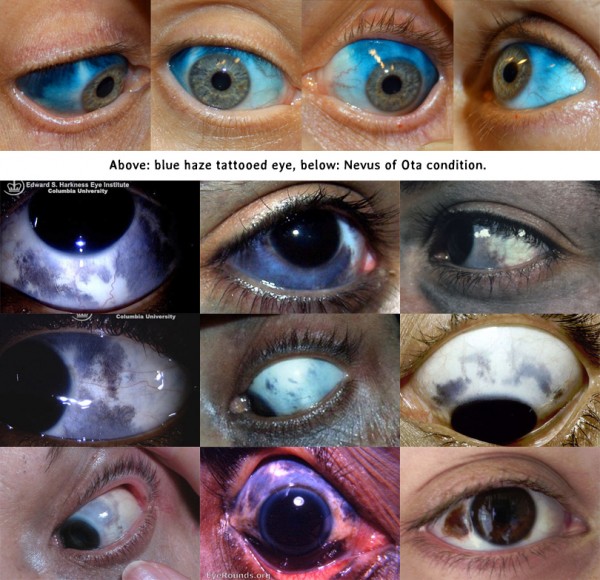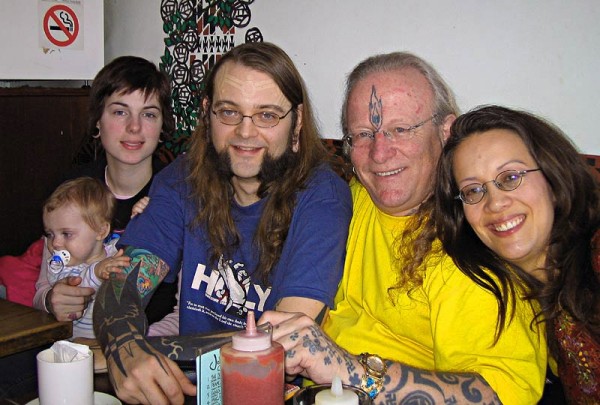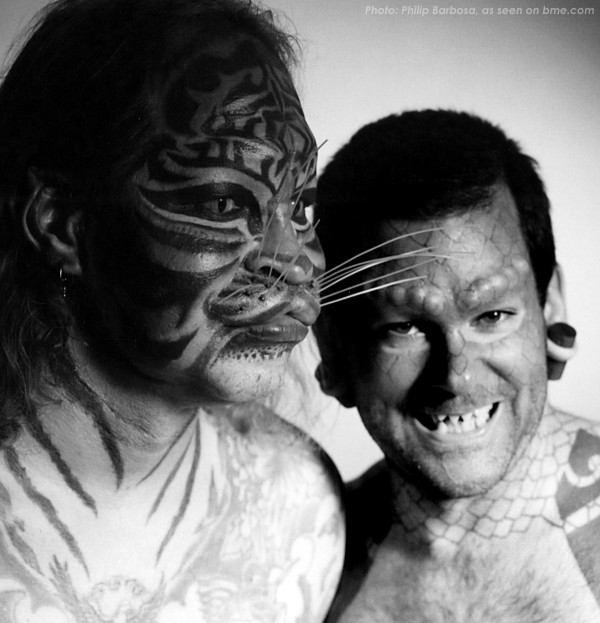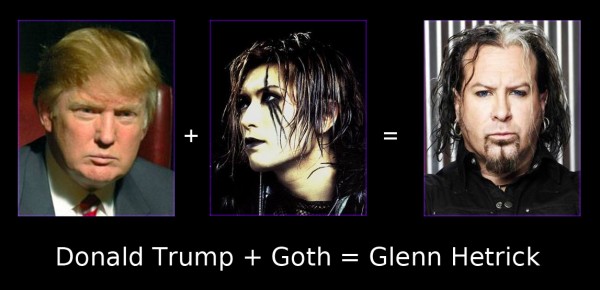I have to admit that I’ve really been enjoying my scleral tattoos / eyeball tattoos from a purely narcissistic point of view. When I’m out in public, the small percentage of people who’ve said anything have been universally positive, with either amazed (or flirty) versions of “you have the most amazing eyes I’ve ever seen”… It’s hard not to enjoy that flattery. But what’s interesting to me is that assuming I don’t just say thanks and be done with it, but instead mention that they’re tattooed, that usually surprises (and sometimes disturbs) the person. So that’s really fun too, to know that people assume it’s natural. One person has told me they thought it was some kind of strange contact lense, but I don’t think many people make that assumption with my eyes, although I suspect it’s common with people who have more solid eyes, especially all-black eyes.
Anyway, as I said most people assume my eyes are natural. And what many may not be aware of is that there’s a condition called the Nevus of Ota, which is sort of a birthmark/discoloration (although sometimes they don’t appear until puberty) that often affects skin, but can also affect the eye and is often actually limited to the eye. It can look a lot like my eye in fact. Here’s a collection of random images of that condition to compare. The top row is my eye, and the rest of people with the medical condition. Click to zoom of course.
By the way, usually there isn’t any risk or damage from this condition, although in rare cases it is linked to melanoma or glaucoma or intraoccular pressure increase — it’s really just a matter of whether it bothers the person aesthetically. There are some treatments for removing these color spots, which actually is making me reconsider my proclamation that eye tattoos are 100% irreversible. Let’s move that number to 99% perhaps. These have been treated by laser and other therapies very successfully and I suspect that some of that could be applied to voluntary scleral tattooing as well — and if you can laser these off, perhaps you can laser off a tattoo on the eye as well.
One of the ways I was able to assess some of the safety/risk factors to eyeball tattooing was by reading everything I could find on conditions like the Nevus of Ota, conjunctival tumors, and so on, because in some ways eyeball tattooing is essentially inducing aspects of these conditions, so by understanding the way the body handles one, we can make predictions about how it’s going to handle the other. If you want to gross yourself out, here’s a gallery of pictures of diseased eyes of various sorts — you can then google the terms that are relevant and open your mind.







